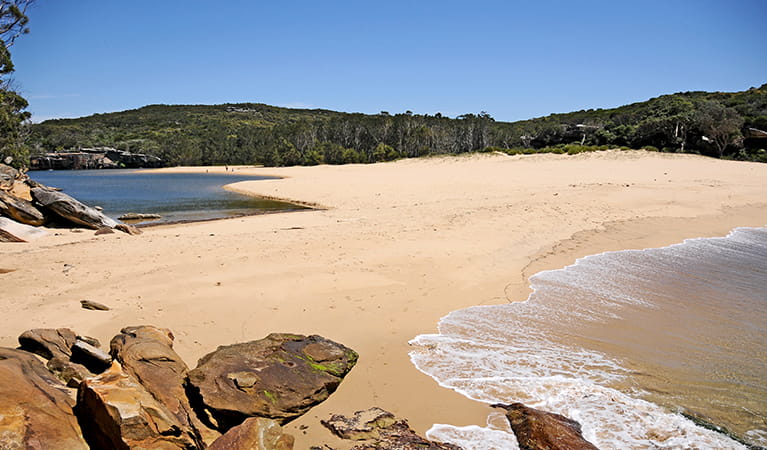School excursion
Biophysical interactions at Wattamolla
Royal National Park
Overview
Senior students will hone their fieldwork skills in this Stage 6 (Years 11-12) Geography excursion at Wattamolla. Located in Royal National Park, Wattamolla offers students a complex site to study biophysical interactions.
Read more about Biophysical interactions at Wattamolla
Students will observe first-hand the biophysical processes that influence this coastal environment of beach, rocky platforms and freshwater creek. We'll discuss the 4 spheres that shape and impact this landscape.
Students will undertake a scientific investigation to determine biotic and abiotic factors here. They'll use their surveying and mapping skills to form a comprehensive audit of the site and the factors impacting it.
As mock land managers they'll determine the best approach for sustainable management of visitation. Their prescribed role will be to reduce the negative impact on this sensitive coastal ecosystem.
For program outline, safety and practical information about this excursion, see info for teachers
| Stage | Stage 6 (Years 11-12) |
|---|---|
| Learning area | Geography |
| Student outcomes |
GE-11-02. Explains geographical processes and influences, at a range of scales, that form and transform places and environments GE-11-04. Assesses responses and management strategies, at a range of scales, for sustainability GE-11-07. Applies geographical inquiry skills and tools, including spatial technologies, fieldwork and ethical practices, to investigate places and environments GE-12-02. Analyses geographical processes and influences, at a range of scales, that form and transform places and environments GE-12-04. Evaluates responses and management strategies, at a range of scales, for sustainability GE-12-07. Selects and applies geographical inquiry skills and tools, including spatial technologies, fieldwork and ethical practices, to investigate places and environments |
| Objectives |
Students will:
|
Excursion details
- When
Weekdays during school term.
- Availability
- Guided. Available on request.
- Duration
- 4hrs
- Grading
- Medium. Guided activities along a beach, across sand dunes and along a creek.
- Price
-
$20 per student for groups of 25 or more. GST included. For smaller groups conditions apply.
- Accessibility
- No wheelchair access
- Equipment
provided - Yes. All field equipment provided.
- Booking
- If you would like to organise a NPWS school excursion please get in touch with local staff or use the 'Enquire' link for the online form.
Local alerts
For the latest updates on fires, closures and other alerts in this area, see https://www.nationalparks.nsw.gov.au/education/stage-6-geography-biophysical-interactions-wattamolla/local-alerts
Operated by
- School excursion inquiries - Sydney South
- 02 9542 0615
- npws.royalguidedtours@environment.nsw.gov.au
- PO Box 144, Audley NSW 2232
Park info
- in Royal National Park in the Sydney and surrounds and South Coast regions
Royal National Park is open 7am to 8.30pm but may have to close at times due to poor weather or fire danger.
-
Park entry fees:
$12 per vehicle per day. Payment options include Audley Visitor Centre, vehicle entry stations, pay machines and the Park’nPay app.
Vehicles over 8 seats: $4.40 per adult, $2.20 per child (per day). Teachers/educational supervisors: free (1 adult per 10 students).
Buy annual pass.
Info for teachers
All the practical information you need to know about Biophysical interactions at Wattamolla.

